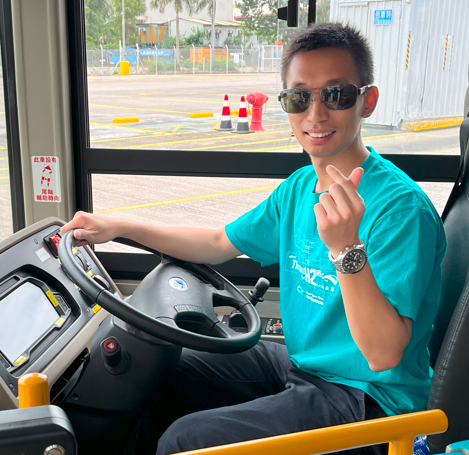AOM Course Revision
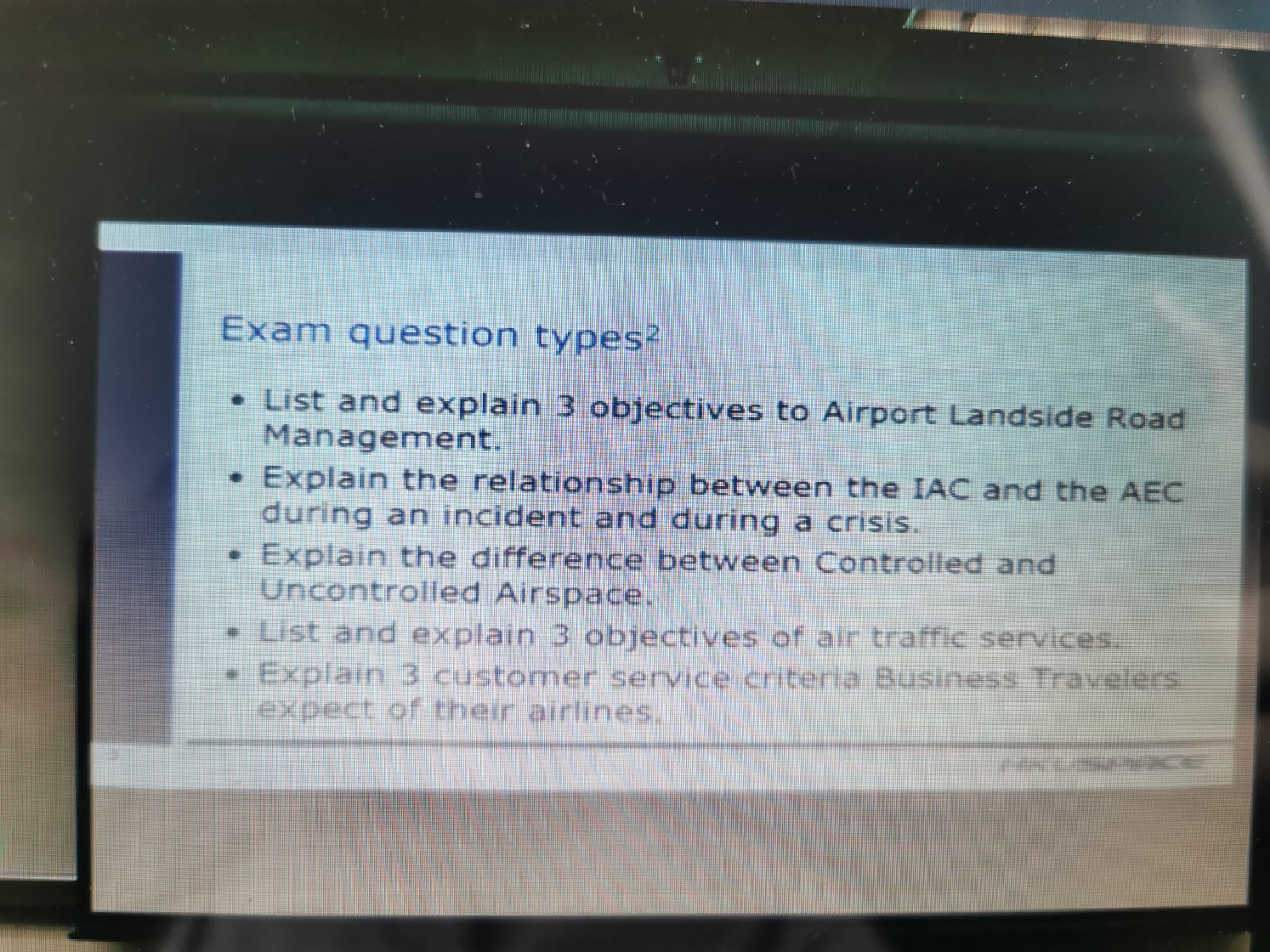
Airport Landside road management is needed to ensure safe and efficient operations of both passenger and cargo. Also, it is customer-oriented. Since the better the road management, the less the incident and so there is less disruption on the overall airport operations.
/////////////////////
During the starting of an incident or aftermath of a crisis, IAC (Integrated Airport Center) is enough to maintain the normal operations. However, when the severity of an incident becomes more serious, the AEC (Accident Emergency Center) will be activated. By that time, the AEC will take various responsibilities. They are including the command role and liaison role.
/////////////////////
Controlled airspace is airspace where air traffic control provided.
In contrast, uncontrolled airspace is airspace where only flight information service (advisory) are provided
/////////////////////
Three main objectives of air traffic service are preventing collision, providing advice and information, and coordinating with search and rescue parties.
////////////////////
Business Travelers pay attention on safety, schedule and punctuality.
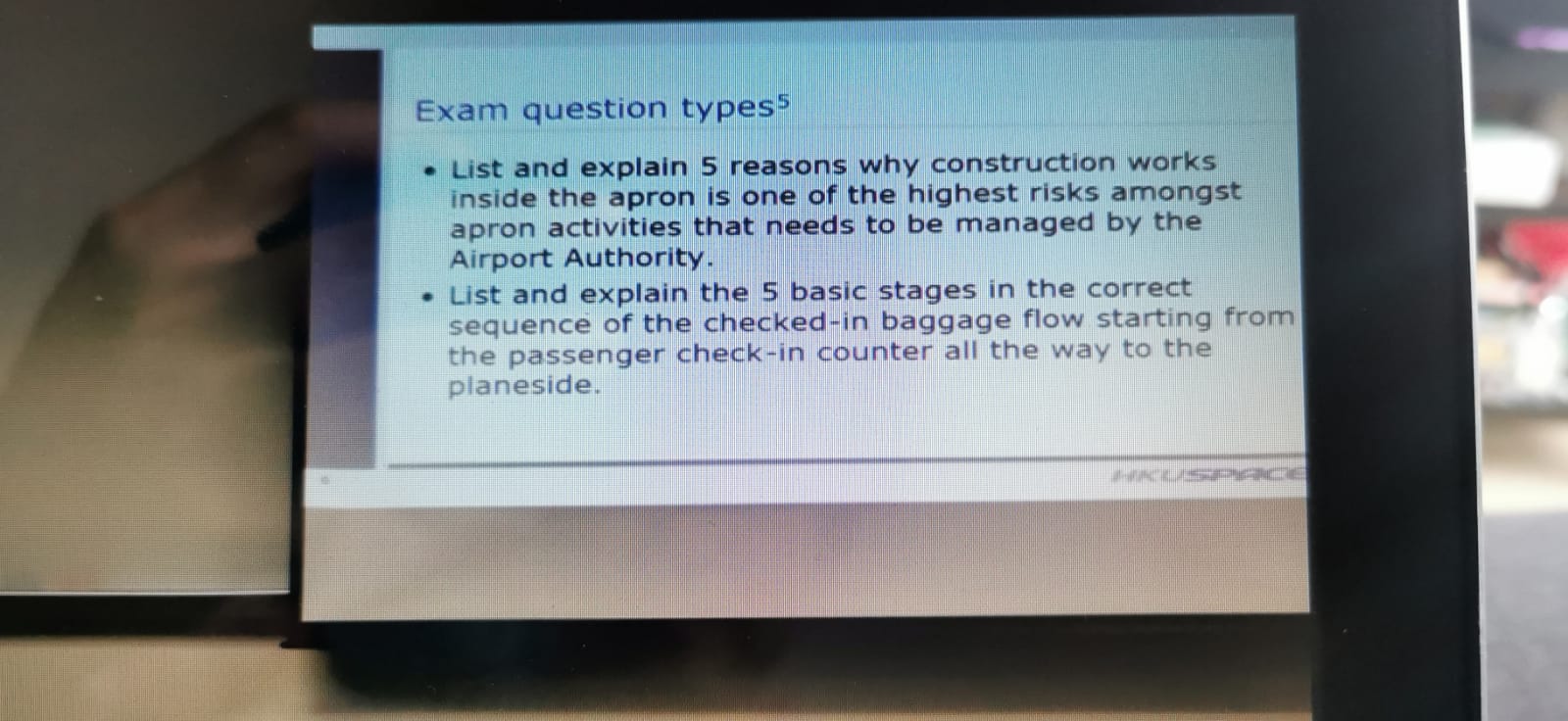
(機器, 人, 車, 煙塵, 垃圾雀仔, FOD)
First, there are lots of moving equipment. Somehow incidents happen sometimes. It is inevitable although we use different approach to reduce the risk though. Secondly, some operator may be newbie, such as a new vehicle drivers, who may be not familiar with the airport environment and so it is more prone to error, if not an incident. Thirdly, even for those veteran, they might be complacent – this mean their wrong attitude can lead to incident. Fourthly, dusk and haze are not unusual in construction site, these pollution may reduce the visibility of the taxiway and runway, which have impact on airfield operation. Fifth, the construction workers might throw their food waste randomly and that might attract birds, which is sort of threat to flight safety.
////////////////////////////
Checked baggage are collected at check in counter, either airport or in-town one, these baggage will be logged onto BHS (baggage handling system) and will receive X-ray scanning at airport, those bags with no security threat as authorized to load (ATL) while those with problem will be labelled as NATL (Non-authorized to load). If bag is ATL, they will be loaded into ULD or a container by ground handling agent. Meanwhile, the bind information (Licence Plate number – LPN, and the container number) will be recorded on BMS (baggage management system) before the baggage are delivered to ship side.
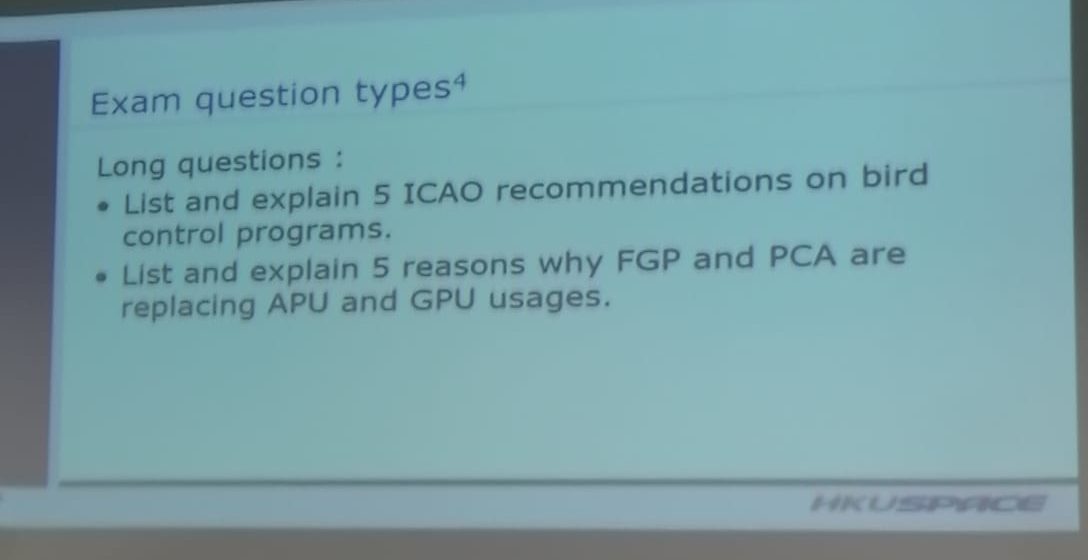
ICAO recommendation on bird control is actually a typical problem solving approach which includes identifying the populations of bird that causing the problem. It is important because we need to know the species and quantity at the very beginning. After we have the targeted types, the next step is to determine the behavior of them. We need to know their movement pattern (individual or a flock) andappear time (daytime, nighttime or on season basis). We also should study their food source and habitat area. Next, ecology of the airport environment may be related. It is because of certain types of features that attract those birds. For example, we should study if there is any standing of water surface, farming area and landfill area near the airport. Finally, with all the data and information, we can determine what attract those birds – make the conclusion and create solutions targeting to those birds.
There are 5 major benefits that urging the using of FGP (fixed group power) and PCA (pre-conditioned air) in lieu of APU (Auxiliary Power Unit) and GPU (Ground Power Unit). First, FGP and PCA are comparatively efficient than APU and GPU. The first reason is supported by the second reason – using FGP and PCA require less ground equipment inventory & maintenance since the FGP and PCA are attached to the jetway. The third benefit is that using FGP and PCA are less reliant on RHO (ramp handing office)’s personnel as they are required to deploy the GPU from other location of airfield to the parking area. The fourth reason is that less ground equipment around the aircraft can reduce the operational risk of safety while it can increase the area for loading and unloading operations. Lastly, using FGP and PCA seems to be a more eco-friendly solution – it consume relatively less hydrocarbon fuel usage, then it produces relatively less carbon emissions and so the air is more clean.
https://studyflying.com/icao-recommendation-on-bird-control/
https://studyflying.com/reasons-why-fgp-and-pca-are-replacing-apu-and-gpu-usages/
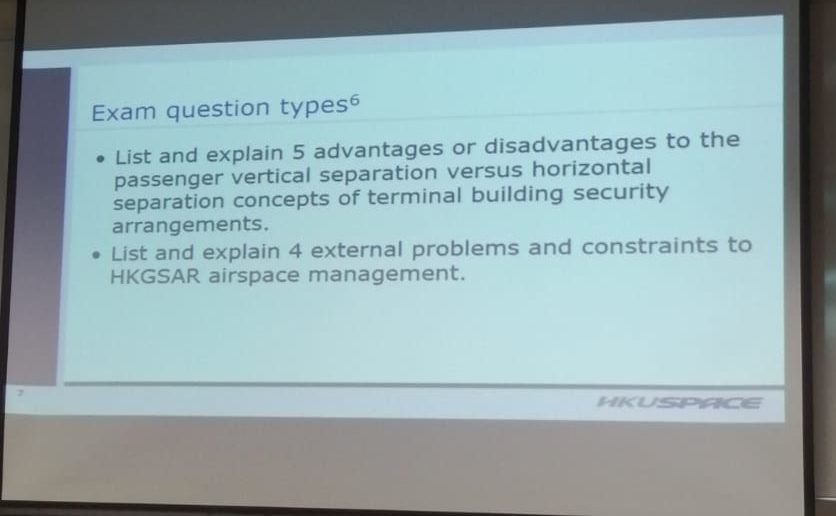
The advantages of vertical separation include the fact that the originate and departure (O&D) passengers are not being mixed. Also, the transit and transfer passenger are receiving security check separately. Therefore, there are less impact of upstream security problem. For those departure passengers at original airport, they only need to receive the security check before they enter the airside while the arrival passenger don’t need receiving security check (Anti-smuggling and random check are not counted). The arrival procedure can be faster while there are more quality assurance on local security.
In terms of horizontal separation, the advantages include the fact that departure passenger just need to receive security check before entering the waiting room for boarding. This means that the airport don’t need extra equipment and personnel to check the transit/transfer passenger. Therefore, it can save more cost on both equipment and manpower.
//////////////////////////////////////////
In other words, the disadvantages of vertical separation include the fact that more equipment and personnel are needed for security checking – it increases the cost indirectly. Since departure passenger and transit/transfer passenger are receiving security check at different location. Also, the time used by the transit/transfer passenger is likely to be longer since they need to go through security check point before they enter the waiting room again. Also, it is using zone concept – the management of two zone will be more complicated.
However, horizontal separation model also has its disadvantages: (O&D) passengers and transit/transfer passenger can meet in the terminal. It means that more personal is needed to conduct security petrol/monitoring, it requires less for security screening progress though. Indeed, it also require more equipment and personal – since every boarding gate needs a set of equipment and squad to perform the screening. Also, the handling time for arrival passenger will be longer because they need to receive screening as well.
//////////////////////////////////////////
First, the airspace of the Pearl River Delta (PRD) is quite small, but there are too many traffic within the area. Secondly, there is the Macau Airport (VMMC) are nearby the HKIA. Our controller need to handle the flights transiting HKFIR to/from VMMC. This significantly increase our controller workload. Also, our flights need to share the slot with them since separation have to maintain. Thirdly, it is not unusual to see the flow control from the ATC of Mainland China. The fourth most common external problem is that the HKFIR and the FIR in Mainland China are using different cruising level referring system, at least the unit of height is different (feet v.s meter).
https://studyflying.com/land-airside-separation/
https://studyflying.com/hksars-external-problems-and-constraints-in-airspace-management/
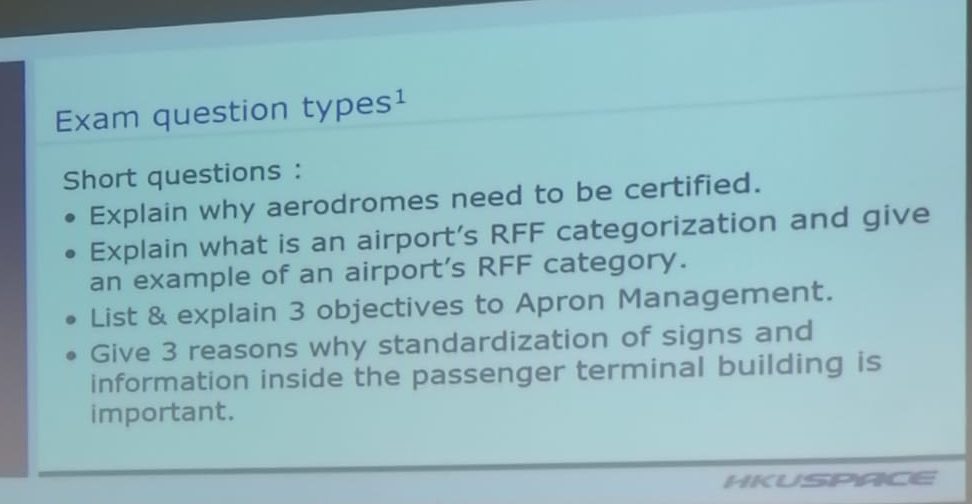
Aerodromes are needed to be certified for the sake of regulation compliance. According to ICAO Annex 14, to certify an aerodrome can be helpful to ensure the safe and efficient operations for international airport. It is simply – you have to meet the standard to get the certification. Actually, it is also required by the Hong Kong (Aviation Navigation Order) 1995, the article 73 requires annual renewal of aerodrome license – since passenger flights have to take off and land at a licensed aerodrome or a government aerodrome.
https://studyflying.com/why-aerodromes-need-to-be-certified/
Rescue and Fire Fighting (RFF) puts various things into consideration. They are including the type and number of fire engine, the type and quantity of fire extinguishing agent that they are carrying, the discharge rate and the covering range (distance). For example, the VHHH is rated as RFF 10.
https://studyflying.com/rff-rescue-fire-fighting-category/
Apron management objectives is ensuring the safe and efficient operations on apron. The operations include the movement of aircraft on ground, movement of cargo, mail and baggage and the transfer of passenger.
https://studyflying.com/apron-managements-objectives/
First, standardized signs can be more easy to be understood by the receiver (passengers and visitors). Secondly, it can create a sense of openness since all the dimension of signage and boards are formatted. They suppose not to block our vision. Thirdly, it is kind of marketing strategy since the iconic color or text size and format might be unique for individual airport.
https://studyflying.com/the-significance-of-standardised-signs-and-information-inside-the-passenger-terminal-building/
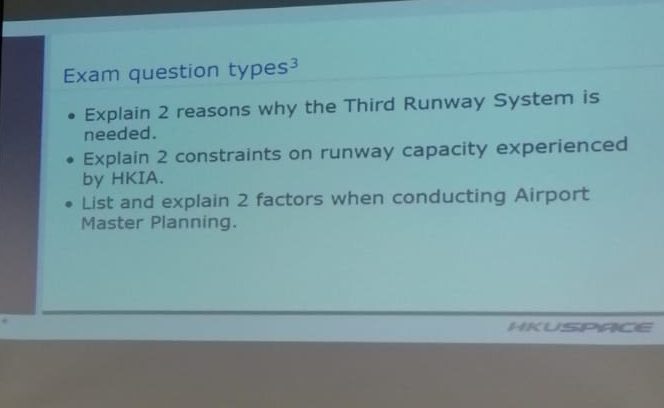
Firstly, the current capacity have almost reach to its saturation.
Secondly, we can foresee that the future movements (demand of both cargo and passenger flights).
https://studyflying.com/why-hong-kong-should-has-the-third-runway-system-3rs/
First, the current ATC system and number of runway almost cannot handler more traffic – reaching the saturation point. Secondly, the geographical environment have limited the runway capacity – the terrain and airspace complexity.
https://studyflying.com/hkias-major-runway-capacity-constraints/
First, the budget is the main factor when conducting an Airport Master Planning. It is because a huge amount of money are involved to build up/ extend as well as maintain an airport. Secondly, what is expected in the future. Usually, lifespan of an airport or an airport planning is talking about a 30-50 years planning. Therefore, what the industry will look like and what is the expected movements are putting into consideration.
https://studyflying.com/factors-need-to-be-considered-when-conducting-airport-master-planning/
Calendar
| S | M | T | W | T | F | S |
|---|---|---|---|---|---|---|
| 1 | 2 | 3 | 4 | 5 | 6 | |
| 7 | 8 | 9 | 10 | 11 | 12 | 13 |
| 14 | 15 | 16 | 17 | 18 | 19 | 20 |
| 21 | 22 | 23 | 24 | 25 | 26 | 27 |
| 28 | 29 | 30 | 31 | |||
Archives
- December 2025
- November 2025
- October 2025
- September 2025
- August 2025
- July 2025
- June 2025
- May 2025
- April 2025
- March 2025
- January 2025
- December 2024
- November 2024
- October 2024
- September 2024
- August 2024
- July 2024
- June 2024
- May 2024
- April 2024
- March 2024
- February 2024
- January 2024
- December 2023
- November 2023
- October 2023
- September 2023
- June 2023
- May 2023
- April 2023
- March 2023
- July 2022
- May 2022
- April 2022
- August 2021
- April 2021
- March 2021
- February 2021
- December 2020
- November 2020
- October 2020
- September 2020
- August 2020
- July 2020
- June 2020
- May 2020
- April 2020
- March 2020
- February 2020
- January 2020
- December 2019
- September 2019
- June 2019
- May 2019
- April 2019
- March 2019
- February 2019
- January 2019
- December 2018
- November 2018
- October 2018
- July 2018
- June 2018
- May 2018
- April 2018
- March 2018
- February 2018
- January 2018
- December 2017
- November 2017
- October 2017
- September 2017
- June 2017
- March 2017
- January 2017
- December 2016
- August 2016
- July 2016
- June 2016
- May 2016
- April 2016
- March 2016
- January 2016
- December 2015
- November 2015
- October 2015
- September 2015
- March 2014
- September 2013
- August 2013
- March 2013
- September 2012
- August 2012
Categories
- AFTC training
- AGK – Airframe, Engine, System
- AGK – Instruments
- ATPL Knowledge
- Aviation
- Aviation English
- BAK
- BC Life in CTB
- Book Sharing
- Books of OSH
- Cathay Pacific
- CNY Trip 2019
- CNY trip 2020 (Malaysia)
- Coffee
- Communication
- Corporate Governance
- English Learning
- Environmental Management
- ERM (enterprise risk management)
- Excel
- First Step Summit
- Flight International (Magazine)
- Flight planning and Monitoring
- HKMA ADMS
- Human Performance and Limitations
- Introduction to OHS
- IT
- Korea Trip 2019
- Learn from aviation accident
- Legislative Context in OHS
- London + Paris 2013
- Macau @ Trip 2017
- Meteorology
- Microsoft Windows
- MOLDOVA CHALLENGE
- My Diaries
- My Travels
- Navigation
- Occupational Health and Safety (OSH)
- Operational Procedures
- Operations Management
- Organizational Behavior
- OSH English
- Power BI
- Preparation
- Principal of Flying
- Python
- Quality Management System (QMS)
- Radio Navigation
- Regulations, Rules and Practices
- Risk Assessment
- Road to be an airline cockpit crew
- Route Training
- Summer Trip 2018
- Taiwan trip 2016
- The life in VHHH
- The road to be a pilot
- The road to be a RSO
- Uncategorized
- Weight & Balance
- Wine
- 學車 in CTB
- 私牌系列
- 馬來西亞 (怡保+檳城) 2024
